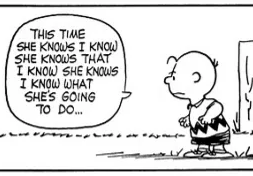Knowledge, Intent, and Knowledge of Someone Else’s Intent
As yesterday’s post explained, contributory copyright liability emerged in the nineteenth century, but was not given a determinative test until 1970, in the Second Circuit’s opinion in Gershwin Publishing Corp. v. Columbia Artists Management, Inc. Under that test, a secondary actor could be held contributorily liable for someone else’s infringement if the actor had knowledge of the infringing activity and materially contributed to it.
That test was difficult enough to apply consistently on its own. But in 2005, the Supreme Court threw a further monkey wrench into the works when it resurrected Gershwin’s use of the term “inducement.” In a case involving the distribution of filesharing software to a group largely consisting of infringers, the Court stated the test for contributory liability as follows:
One infringes contributorily by intentionally inducing or encouraging direct infringement, see Gershwin Pub. Corp. v. Columbia Artists Management, Inc., 443 F.2d 1159, 1162 (C.A.2 1971)…. [T]hese doctrines of secondary liability emerged from common law principles and are well established in the law, [Sony Corp. v. Universal City Studios, 464 U.S.,] at 486 (Blackmun, J., dissenting); Kalem Co. v. Harper Brothers, 222 U.S. 55, 62–63 (1911); Gershwin Pub. Corp. v. Columbia Artists Management, supra, at 1162; 3 M. Nimmer & D. Nimmer, Copyright § 12.04[A] (2005).
MGM v. Grokster, 545 U.S. 913, 930–31 (2005).
For the past two decades it’s been unclear what the Grokster Court meant to do here. Was it reformulating the traditional test for contributory infringement to focus only on intentional inducement, rather than knowledge and material contribution? If so, then why the unqualified citations to Gershwin? If not, did this passage just add inducement as an additional form of indirect liability, or did it change Gershwin somehow?
Lower courts, for the most part, read Grokster the last way—inducement was not a complete substitution for the traditional material contribution test, but the traditional test didn’t come through unscathed either. If Grokster was just resurrecting “inducement” as a way of satisfying the second element of Gershwin, then why does Grokster talk about intent? There’s no mention of intent in Gershwin, only knowledge. If Grokster instead intended to add a third form of indirect liability to copyright law, why does the Court call it “contributor[y]” infringement?


